| |
| |
Russia
 Back
Menu
Back
Menu
Topol M SS-27
missiles to be shown at Victory Day parade 9 May 2010 on Moscow's Red
Square.
Russia's
new Topol M missile system will for the first time be
shown at the Victory Day parade on May 9 on Moscow's
Red Square, a spokesman for the Strategic Missile Forces
said. Earlier Topol M predecessors — Topol missile
systems — were shown at Victory Day parades in
downtown Moscow. Col. Vadim Koval said three Topol M
launchers were brought to Alabino near Moscow early
on Friday. The three-stage Topol M (SS-27 Sickle B)
is a solid-propellant, silo-based or road-mobile intercontinental
ballistic missile (ICBM). It has a maximum range of
11,000 km (6,800 miles). On May 9, 2009, a military
parade involving over 9,000 personnel, 103 sophisticated
tracked and wheeled military vehicles, as well as 69
aircraft and helicopters was held on Red Square as Russia
celebrated Victory Day. Victory Day marks the final
surrender by Nazi Germany to the U.S.S.R. in WWII, often
referred to as the Great Patriotic War in Russia and
other states in the former Soviet Union. The 2009 parade
was largely a rehearsal for this year's event, when
Russia is to mark the 65th anniversary of the victory
in the Great Patriotic War. The first Victory Parade
was held on Red Square on June 24, 1945 on the order
of the then-Supreme Commander-in-Chief, Joseph Stalin.
26 February 2010 |
|
|
|
| |
United
States  Back
Menu
Back
Menu
U.S. Army
Launches Ground Combat Vehicle Contest.
With
Pentagon approval newly in hand, the U.S. Army on Feb.
25 released its request for proposal (RfP) for the Ground
Combat Vehicle (GCV), the service's planned next-generation
full-spectrum-combat troop carrier. "I am really
hoping for three solid proposals to enter into the technology
development phase," Gen. Peter Chiarelli, the Army's
vice chief of staff, told an audience later that day
here at a convention of the Association of the U.S.
Army (AUSA). Chiarelli addressed the gathering via video
teleconference. Interested companies have until April
26 to submit their proposals. Army officials have said
they plan in September to award up to three contracts
for the GCV program's 27-month technology development
phase. Chiarelli said he rejected the idea that the
new vehicle program is Future Combat Systems "warmed
over." He told the audience that he had read the
requirements document several times and is certain the
program is taking a new direction while incorporating
lessons from Iraq and Afghanistan. The RfP was delayed
two weeks as the Defense Department and the Army discussed
details of the service's acquisition strategy, said
Maj. Gen. John Bartley, program executive officer for
integration. The Army wants to issue the RfP before
finishing its formal analysis of alternatives, an unusual
move that Pentagon acquisition executive Ashton Carter
eventually approved. By approving a materiel development
decision, Carter is saying he is willing to consider
that there is a need for a ground combat vehicle, Bartley
said. "The decision of whether or not there will
be a GCV will be at milestone A" in September,
he said. The finished analysis of alternatives also
will be considered then.
26 February 2010 |
|
|
|
| |
United
States  Back
Menu
Back
Menu
Industry
can deliver 130 Stryker vehicles with "MRAP-like" protection.
If
the U.S. Army approves funding to keep the production
line steady, industry can deliver 130 Stryker vehicles
with "MRAP-like" protection in time for the
next Stryker brigade's deployment, sources said. U.S.
soldiers from the 1st Stryker Brigade Combat Team patrol
in Baqubah, Iraq. (AHMAD AL-RUBAYE / AGENCE FRANCE-PRESSE)
The Army is nearing a decision on whether to give the
flat-bottomed Stryker a double V-shaped hull, which
would provide protection equivalent to that of a Mine
Resistant Ambush Protected (MRAP) vehicle, sources said.
The changes were already planned as part the Stryker
modernization program and are scheduled to be cut into
the production line in 2015 and 2016. After several
Strykers were damaged in Afghanistan, vehicle maker
General Dynamics began thinking about accelerating the
change. It proposed the acceleration to the Army in
January, one source said. The V-shaped hull distributes
the blast and moves the bottom of the vehicle higher
off the ground. The Army plans to reduce production
to 20 Strykers per month by next January, which would
delay the improvements, the source said. But if production
is held steady, the company could deliver 130 vehicles
in the infantry carrier configuration in time for the
next Stryker brigade's deployment to Afghanistan in
July 2011. A full Stryker brigade has 332 vehicles in
10 variants, two of which are not yet in full-rate production.
The company will follow with seven more variants by
the end of December 2011. To do this, the rate of production
has to be kept at roughly 35 per month. Funding is also
needed for government testing, the source said. The
company has done some testing, including blast testing
and analysis with partial vehicles, but a full vehicle
prototype has not been tested yet, the source said.
Part of the Army's decision is to decide how much government
testing they want to fund before fielding. There is
$299.5 million in the president's budget, including
base and supplemental dollars, to purchase 83 Stryker
vehicles. There is an additional $591.3 million for
Stryker modifications, and $136.3 million in research
and development funds for Stryker survivability efforts.
25 February 2010 |
|
|
|
| |
Russia
 Back
Menu
Back
Menu
Members States
of the Cooperation organization of Shanghai will organize Anti-terrorists
exercises in September 2010.
Antiterrorist
exercises of the Member States of the Cooperation organization
of Shanghai (OCS) will proceed in Kazakhstan in September,
announced Thursday, February 25, 2010, the chief of
the Russian Army Land Forces, General Alexander Postnikov.
“During these exercises the troops will be involved
to carry out military operations implying all the units”,
indicated the general.
According to him, the specificity of these exercises
consists of what they will be held on the territory
of Kazakhstan, and in what the number of Kazakh soldiers
will be largely higher than that of the other participants.
“Thus, manpower of the Chinese and Russian units
will not exceed 400 soldiers for each country, whereas
Kazakhstan mobilizes approximately 4.000 men”,
M.Postnikov specified.
25 February 2010 |
|
|
|
| |
United
States (BAE Systems)  Back
Menu
Back
Menu
BAE Systems
Secures More Than US$140 Million Contract for 250 Mine Resistant Ambush
Protected Vehicles.
BAE
Systems Land Systems OMC, through its partnership with
General Dynamics Land Systems Canada (GDLS-C), was awarded
a follow-on order for the supply of 250 RG31 Mk5E vehicles
in support of the Mine Resistant Ambush Protected (MRAP)
vehicle programme for U.S. forces. All vehicles will
be manufactured in South Africa and delivery of the
vehicles to GDLS-C will take place in 2010.
24 February 2010 |
|
|
|
| |
United
States (BAE Systems)  Back
Menu
Back
Menu
BAE Systems
Receives $90.6 Million Order for Mine Resistant Ambush Protected Special
Operations Vehicles.
BAE
Systems has received a delivery order from the U.S.
Marine Corps Systems Command worth up to $90.6 million
to provide 58 U.S. Special Operations Command (SOCOM)
Mine Resistant Ambush Protected (MRAP) vehicles. The
U.S. SOCOM vehicle is one of several MRAP variants based
on the RG33 family of vehicles.
"These vehicles have been in service with our forces
in Iraq providing survivability against improvised explosive
devices (IEDs), medium machine gun or small arms fire
and mine blast protection," said Mark Signorelli,
vice president and general manager of New Vehicles and
Amphibious Systems for BAE Systems. "The entire
RG33 team is proud to be able to provide these highly
survivable vehicles to support our troops."
Work on the delivery order will be performed by the
existing workforce and will begin immediately at BAE
Systems facilities in York, Pennsylvania and Aiken,
South Carolina; with assistance from Letterkenny Army
Depot (LEAD) and Spartan Motors Chassis' facility in
Charlotte, Michigan.
23 February 2010 |
|
|
|
| |
United
States (Force Protection)  Back
Menu
Back
Menu
Force Protection,
Inc. to Debut Joint All-Terrain Modular Mobility Asset (JAMMA) Vehicle
at AUSA Winter 2010.
Force
Protection, Inc., a leading American designer, developer
and manufacturer of survivability solutions, will debut
the Joint All-Terrain Modular Mobility Asset (JAMMA)
vehicle at the Association of the United States Army
(AUSA) Institute of Land Warfare’s Winter Symposium
in Ft. Lauderdale, Fla., February 24-26, 2010 at booth
#109. JAMMA is the only armor-ready, four-occupant,
hybrid, high-performance off-road vehicle that can be
transported inside the V-22 Osprey helicopter.
23 February 2010 |
|
|
|
| |
United
States (BAE Systems)  Back
Menu
Back
Menu
BAE Systems
Introduces two new wheeled armoured at AUSA Winter 2010, the Caiman
MTV and the RG Outrider.
BAE
Systems recently completed two successful demonstrations
of the Caiman Multi-Theater Vehicle (MTV) before U.S.
military leaders. A new version of the combat-proven
Caiman Mine Resistant Ambush Protected (MRAP) vehicle,
Caiman MTV is designed for multiple theaters of operation
and, specifically, the end strength transition from
Iraq to Afghanistan. The vehicle will be on display
at the Association of U.S. Army’s Winter Symposium
in Fort Lauderdale, Florida February 24-26, 2010 at
booth #2521. BAE Systems gave U.S. military leaders
the first look at the RG Outrider recently at the Nevada
Automotive Test Center – a light armored vehicle
designed to meet the needs of U.S. special operations
and coalition forces operating in Afghanistan. Based
on the RG series of light tactical vehicles originally
designed and developed in South Africa, the 4x4 RG Outrider
offers a cost-effective approach to the enhanced protection,
demonstrated mobility and payload capacity required
in Afghanistan.
23 February 2010 |
|
|
|
| |
United
States (Oshkosh)  Back
Menu
Back
Menu
Oshkosh Defense
presents two new variants of his M-ATV vehicle at AUSA Winter 2010.
Oshkosh
Defense, a division of Oshkosh Corporation (NYSE:OSK),
is displaying two new tactical wheeled vehicles in Fort
Lauderdale, Fla., today through Friday (Feb. 24-26)
at the annual Association of United States Army (AUSA)
Winter Symposium and Exposition. Two new variants of
the MRAP All-Terrain Vehicle M-ATV are making their
debut at the event, as is - for the first time in the
Oshkosh booth - an Oshkosh truck from the U.S. Army's
Family of Medium Tactical Vehicles. "This AUSA
event is a great opportunity for Oshkosh Defense to
demonstrate our support for the U.S. Army and showcase
our newest offerings to military personnel across all
ranks," said Andy Hove, Oshkosh Corporation executive
vice president and president, Defense. "The face-to-face
conversations taking place at this show allow us to
gather important feedback and information, which we
use to continually improve our military vehicles."
The new utility and ambulance M-ATV variants on display
at AUSA offer new capabilities and mission profiles
while maintaining the durable, best-in-class mobility
and superior crew protection of the original M-ATV offering.
Utility and ambulance M-ATVs were developed to allow
military operations to provide critical casualty care
and resupply services in unforgiving landscapes where
tactical missions must operate. The M-ATV has provided
superior off-road mobility for harsh mountainous terrain
and unimproved road networks in places like Afghanistan.
To date, the company has received orders valued at more
than $4.74 billion to supply 8,079 M-ATVs, spare parts
kits and in-theatre aftermarket support.
23 February 2010 |
|
|
|
| |
United
States (Navistar)  Back
Menu
Back
Menu
Navistar
Defense Showcases MaxxPro Dash With DXM Independent Suspension at AUSA
Winter 2010.
Navistar
Defense, LLC today will showcase its enhanced International®
MaxxPro® Dash Mine Resistant Ambush Protected (MRAP)
vehicle with DXM™ independent suspension for attendees
at the 2010 Association of the United States Army (AUSA)
Winter Symposium and Exposition. The enhanced MaxxPro
Dash with DXM independent suspension offers added mobility
for off-road travel while still providing warfighters
with Category I MRAP survivability protection. A number
of other added features that are included on the enhanced
Dash include insulation and door upgrades, as well as
an inclinometer, which acts as a level and measures
side slope during vehicle operation. The DXM independent
suspension solution is provided by Hendrickson Truck
Suspension Systems and AxleTech International. Navistar
selected this no-compromises suspension system after
conducting an extensive trade study. The DXM design
also minimizes the effort needed to integrate the system
onto existing MaxxPro and 7000 Series vehicles should
the military be interested in retrofitting the company’s
fleets.
23 February 2010 |
|
|
|
| |
United
States (Oshkosh)  Back
Menu
Back
Menu
Oshkosh Corporation
Receives $640 Million Award to Supply 1,460 Additional M-ATVs.
Oshkosh
Corporation (NYSE:OSK) announced this 23 February 2010
it has received an additional $640 million award from
the U.S. Army Tank-automotive and Armaments Command
Life Cycle Management Command (TACOM LCMC) to deliver
1,460 MRAP All Terrain Vehicles. To date, Oshkosh has
received awards valued at more than $4.74 billion for
8,079 M-ATVs, as well as spare parts kits and aftermarket
in-theater support. "Our Armed Forces have Oshkosh's
full assurance that these highly mobile, life protecting
vehicles will continue to be a top priority because
we understand the urgency of the situation," said
Robert G. Bohn, Oshkosh Corporation chairman and chief
executive officer. "From day one, Oshkosh Corporation
and our employees have been committed to meet or exceed
the M-ATV delivery requirements, while simultaneously
producing our other quality advanced tactical wheeled
vehicles and meeting all other contractual obligations."
23 February 2010 |
|
|
|
| |
France
(CTA International)  Back
Menu
Back
Menu
Revolutionary
CTAI weapon turret system to start qualification.
A
revolutionary new weapon system for the British and
French armies has been given a major boost with the
signing on the 8th of February of an £11m contract
with the French and UK ministries of defence. Under
the contract, CTA International, an Anglo-French joint
venture between BAE Systems and Nexter Systems, will
begin qualification in early 2011 of cannon and ammunition
for the Warrior Capability Sustainment Programme (WCSP),
the Scout reconnaissance vehicle for the British Army
and the future reconnaissance vehicle (EBRC –
Engin Blinde de Reconnaissance et de Combat) for the
French Army.
Qualification is a rigorous process designed to prove
that a weapon system is safe, effective and reliable.
Both the gun and ammunition will be subjected to freezing,
baking, extremes of humidity and a series of “shake,
rattle and roll” trials to demonstrate that they
will operate under every foreseeable circumstance. While
the system has been passed for manned firing and considerable
data has already been collected, these trials will formally
pass the system for use by the British and French armies.
While CTAI’s 40mm Cased Telescoped Cannon and
Ammunition (CTCA) was mandated for WCSP and the Scout
vehicle by the UK Ministry of Defence in March 2008,
the turrets and Scout chassis will be selected through
competition.
23 February 2010 |
|
|
|
| |
Jordan
 Back
Menu
Back
Menu
Lockeed Martin
was awarded for HIMARS High Mobility Rocket System for Jordan.
Lockheed
Martin Corp., Missiles and Fire Control, Grand Prairie,
Texas, was awarded on Feb. 4, 2010 a $26,884,609 firm-fixed-price
contract for High Mobility Artillery Rocket System Full
Rate Production 5, option exercise for 12 Jordan Launchers.
Work is to be performed in Grand Prairie, Texas, (40
percent) and East Camden, Ark., (60 percent) with an
estimated completion date of Feb. 28, 2012. One bid
was solicited with one bid received.
22 February 2010 |
|
|
|
| |
United
States  Back
Menu
Back
Menu
New soldier
combat uniforms for the US Army troops in Afghanistan.
Starting
this summer, Soldiers sent to fight in Afghanistan will
wear an Army Combat Uniform with the "MultiCam"
pattern instead of the standard-issue universal camouflage
pattern. Secretary of the Army John McHugh made that
announcement Feb. 19, after the service conducted a
rigorous four-month evaluation of various uniform patterns
to determine what could best protect Soldiers in Afghanistan.
The new uniforms are of the same material and cut that
Soldiers are already wearing in the Army Combat Uniform
or ACU. It is the camouflage printed on the fabric that
will be different. The change allows commanders in Afghanistan
to have more options in deciding how best to equip their
Soldiers. The uniforms bearing the new pattern, like
the latest ACUs, will be fireproof. The decision to
use the MultiCam pattern came after the Army evaluated
its effectiveness at providing camouflage protection
in Iraq. That was done, in part, by consulting with
nearly 750 Soldiers who had deployed to Afghanistan.
Those Soldiers participated in a "photo simulation"
study administered by the Army. Additionally, feedback
from Soldiers who have already worn the uniform in Afghanistan
was used to make the final decision. About 2,000 Soldiers
were involved in tests to see how effective patterns
such as MultiCam and UCP-Delta were at providing concealment
in the varying terrain of Afghanistan.
22 February 2010 |
|
|
|
| |
United
States (Oshkosh)  Back
Menu
Back
Menu
Oshkosh Defense
Receives $13 Million Delivery Order to Supply HEMTT A4s trucks to Army
Reserve.
Oshkosh
Defense, a division of Oshkosh Corporation (NYSE:OSK),
has been awarded a delivery order valued at more than
$13 million from the U.S. Army Tank-automotive and Armaments
Command Life Cycle Management Command (TACOM LCMC) to
supply more than 35 next-generation Heavy Expanded Mobility
Tactical Trucks to the Army Reserve. The variants included
in the order include M984A4 wreckers and M1120A4 load
handling systems (LHS). Production is expected to begin
in September 2010 and be completed in June 2011. The
order was issued under the Army's Family of Heavy Tactical
Vehicles (FHTV) III contract.
22 February 2010 |
|
|
|
| |
Russia
 Back
Menu
Back
Menu
The first
two air defense missile S-400 Triumph are operational in the area of
Moscow.
The
first two air defense missile system S-400 systems have
entered combat duty at the regiment base of the Military
Space Defense joint command in Elektrostal, the Moscow
Region. The S-400 Triumph (NATO code : SA-21 Growler)
, seen by the Russian army as the best anti-aircraft
missile system, has been adopted by the army. The military
claim that the S-400 system boasts unique characteristics.
It can destroy any air target, including aircraft, unmanned
aerial vehicles, and cruise and ballistic missiles within
a range of 400 kilometers and an altitude up to 30 kilometers.
The system is almost three times more efficient than
its Russian and foreign counterparts. There are no plans
so far to export the S-400. It will be produced only
for the Russian Armed Forces. An additional two systems
will be deployed by the end of 2010.
21 February 2010 |
|
|
|
| |
United
Kingdom (BAE Systems)  Back
Menu
Back
Menu
The BAE Systems’
programme to deliver 60 TERRIER™ vehicles to the British Army
has taken two important steps forward.
Manufacture
of the first TERRIER production hull began on 27 January
at the company’s Newcastle plant. In a ceremony
attended by senior staff from both the MoD Combat Wheels
Group and BAE Systems’ suppliers; visitors saw
machining operations on the first side plate commence.
Attendees at the production launch ceremony were able
to see first hand the £2m investment in process
and machinery which has been put in place to support
Terrier production. Both have been completely overhauled
to improve build efficiency and maximise build quality,
following lessons learnt from production of the heavier
Titan and Trojan engineer vehicles, and the mine-protected
Panther command and liaison vehicle which was recently
delivered to Afghanistan. The first TERRIER hull will
be used in mine blast trials to demonstrate improved
protection levels introduced by modifications resulting
from experience gained on other vehicles during operations
in Iraq and Afghanistan. The complete hull will be available
for trials towards the end of this year. Assembly, integration
and test of the first production vehicle is scheduled
to commence in the first half of 2011. Another important
TERRIER development milestone was successfully completed
in December 2009 after two demonstrator vehicles finished
a comprehensive performance trial designed to demonstrate
reliability growth. This two-month assessment consisted
of a range of typical battlefield missions, including:
- Travelling 3300km, split between road, track and cross
country going
- Excavating 135 pits for Warrior infantry fighting
vehicles
- Digging 39 pits for AS 90 self-propelled howitzers
- Moving 15,500 tonnes of spoil
- Operating the vehicles remotely via a remote control
system and radio link
- Completing a range of route clearance and denial operations
and placement of ditch-crossing fascines.
19 February 2010 |
|
|
|
| |
France
 Back
Menu
Back
Menu
The Russian
Ministry of the Interior interested by the French armored vehicle Panhard
VBL.
The
Russian Ministry of the Interior east in negotiation
with French General Panhard Defense in order to acquire
light armoured vehicles VBL, written Tuesday the daily
newspaper of Kommersant businesses. According to the
newspaper, the negotiations continue but did not approach
the official stage yet. The beginning of a “true
co-operation” between the Russian interior and
Panhard could be announced in June, at the Defense Exhibition
Eurosatory 2010 in Paris. According to French sources,
it could be a question of “a small batch”
of vehicles. The experts recall on their side that the
Russian police forces are already equipped with wheeled
armoured vehicle Tigr and Medved (Bear), are more cheaper
for the same type of vehicle. In addition, they say,
the VBL do not protect the crew against mine explosions
and the firing of heavy machine-guns, as operations
in Africa and in Kosovo show it.
18 February 2010 |
|
|
|
| |
United
Kingdom  Back
Menu
Back
Menu
British army
use for the first time Trojan engineer vehicle and Python mine clearance
system during military operations in Afghanistan.
The
Trojan engineer tracked armoured tank and its Python
mine clearance system have been used for the first
time in the ongoing Operation Moshtarak in southern
Helmand province where troops' progress has been slowed
by the number of deadly Improvised Explosive Devices,
or IEDs, left by insurgents. The Royal British army
Engineers have fired their latest weapon Python mine
clearing system in their battle against the Taliban
for the first time – an exploding hose which
punches safe passage through suspected IED belts.
In addition, The Royal British army Engineers used
Trojan – which is fitted with a large plough
on the front – to clear safe passage through
a suspected IED belt to the north west of Showal,
the Taliban’s ‘seat’ of governance.
18 February 2010
|
|
|
|
| |
United
States (Navistar)  Back
Menu
Back
Menu
Navistar
Defense Awarded $752 Million Contract for MaxxPro Dash MRAP Vehicles.
Navistar
Defense, LLC today was awarded a contract for $752 million
to provide 1,050 enhanced International® MaxxPro®
Dash Mine Resistant Ambush Protected (MRAP) vehicles.
Vehicles under the award from the U.S. Marine Corps
Systems Command will include the DXM™ independent
suspension solution. Since May 2007, Navistar has received
orders for a total of 7,494 MaxxPro MRAP vehicles to
help combat improvised explosive devices (IEDs) and
other threats. In late 2008, the company modified its
design for added mobility and produced the MaxxPro Dash
MRAP variant. The addition of an independent suspension
solution further improves mobility and is one of several
capability insertions that will be incorporated into
the next 1,050 MaxxPro Dash units. Navistar also has
provided more than 8,100 International® 7000 Series
vehicles to the Afghan National Army and Afghan National
Police.
17 February 2010 |
|
|
|
| |
Russia
 Back
Menu
Back
Menu
Russia could
deploy the anti-aircraft defense missiles system S-400 in the countries
of the CEI.
Russia could deploy its ground-to-air missiles of last
generation S-400 Triumph (code NATO: SA-21 Growler)
in the Member States of the CEI if an ad hoc political
decision is adopted, declared Wednesday the chief of
staff of the Russian Air forces, the general Vadim Volkovitski.
“If the Directorate of Political Affairs makes
an adapted decision, these systems will be installed
everywhere”, it indicated at the time of a visit
of the center of space protection of Elektrostal (in
the surroundings of Moscow). According to the general,
S-400 could belong to the anti-aircraft defense system
of the Member States of the CEI (the Community of the
independent States). It is persuaded that these missiles
exceed the similar foreign systems by far. “Being
of the features and the developmental perspectives of
this weapon, we must stress that it is still in its
first age. It needs to grow, to become ripe, but we
can note as of now that no country of the world has
a system having such possibilities and performances”,
underlined the chief of staff of the Russian Air forces.
18 February 2010 |
|
|
|
| |
Russia
 Back
Menu
Back
Menu
Russia increases
its exports of weapons towards the Latin America.
Russia considerably increased its supplies of weapons
to the countries of Latin America, announced the chief
of the Russian diplomacy Sergueï Lavrov at the
conclusion of the negotiations with its counterpart
Mexican Patricia Espinosa. “We increased lately
the volume of the contracts and of the Russian supplies
of armaments in the various areas of the world, in particular
in Latin America”, M.Lavrov indicated. These exports
do not aim political goals nor ideological. “It
is a purely commercial question. Admittedly, the United
States exceeds us, but we progress”, underlined
the Russian minister. According to him, Russia exports
towards Mexico of military equipment which the Mexican
government needs. “They are helicopters, technical
capacities for the coastal guard used in the fight against
the drug trafficking and organized criminality”,
added M.Lavrov.
17 February 2010 |
|
|
|
| |
United
States (Lockeed Martin)  Back
Menu
Back
Menu
Lockheed
Martin Completes Production Of Its First Two JLTV Technology Development
Vehicles Ahead Of Schedule.
Lockheed
Martin has completed, ahead of schedule, production
of its first two Joint Light Tactical Vehicles (JLTV),
both new six-passenger Infantry Carrier variants. The
vehicles will be delivered to the U.S. Army and U.S.
Marine Corps for a year-long testing period as part
of the Technology Development (TD) phase of the JLTV
program. As part of the 27-month TD contract awarded
in October 2008, Lockheed Martin will deliver multiple
JLTV variants and trailers to the Army and Marine Corps
for the testing program, scheduled to begin in April
of this year. The testing will be conducted primarily
at Aberdeen Test Center, MD, and Yuma Test Center in
Yuma, AZ. "Successfully completing production of
our first two TD vehicles ahead of schedule is a major
achievement for our program," said Steve Ramsey,
vice president of Ground Vehicles at Lockheed Martin.
"The team's tireless efforts to design, assemble
and test our previous six operational prototypes culminated
in the production of technology development vehicles
that are mature, low-risk and thoroughly tested."
In addition to the TD vehicles, the Lockheed Martin
JLTV team has produced multiple test vehicles. The team's
current JLTV family of vehicles includes five prototypes,
all of which are in system test and have accumulated
more than 70,000 combined miles:
• The original Infantry Carrier JLTV Category
B model, designed for troop transportation;
• The Utility Vehicle Light Category C model,
designed with a focus on payload;
• The General Purpose Mobility Category A model,
designed for logistical support;
• The second variant of the Utility Vehicle Light
Category C model; and
• The Command and Control on the Move Category
B model. This vehicle is scheduled to make its public
debut at the Association of the United States Army Winter
Symposium in February 2010.
"We are confident that we'll continue to remain
on schedule and deliver a high-quality family of vehicles
that meet all transportability requirements by air,
land and sea," Ramsey added. "We look forward
to final delivery to the U.S. Army and Marine Corps
this spring and having our vehicles rigorously tested."
The Lockheed Martin-led JLTV Team includes leaders in
their respective fields. Lockheed Martin serves as the
prime contractor and design agent, providing advanced
systems, systems engineering, platform and components
integration, design expertise, and program and supply
chain management. The BAE Systems Global Tactical Systems
and Security & Survivability Systems businesses
are providing production facilities for high volume
assembly, and advanced armor solutions for protection.
Alcoa Defense is supplying materials experience, design
services and aluminum components that give the vehicle
its structural strength at reduced weight. JWF –
Defense Systems is offering state-of-the-art machining
and cost-effective fabrication.
17 February 2010 |
|
|
|
| |
Russia
 Back
Menu
Back
Menu
The anti-aircraft
defense missiles system S-400 need a continuous modernization according
to the manufacturer.
The development of the offensive weapons brings the
manufacturer of the ground-to-air missile S-400 Triumph
(code NATO: SA-21 Growler) to modernize this system
unceasingly in order to protect safety from the country,
declared Wednesday the general manager of the consortium
Almaz-Antey, Vladimir Kaspariants. “The S-400
system is permanently modernized in order to be able
to deal with the research and development carried out
by our potential enemy”, it affirmed at the time
of a visit of the center of space protection of Elektrostal
(near Moscow). The ground-to-air system S-400 is able
to reach the Iranian ballistic missiles, announced Wednesday
Vladimir Kaspariants, of the group Almaz-Anteï,
originator of the system, at a meeting within a brigade
of militaro-space Defense deployed in the east of Moscow.
“It is able”, some it answered, questioned
on the capacity of this recent battery, which equips
already the Russian army, to cut down the ballistic
missiles of Iranian manufacture.
17 February 2010 |
|
|
|
| |
United
States  Back
Menu
Back
Menu
General Dynamics
was awarded for the procurement of 250 wheeled armoured vehicle MRAP
RG31A2.
General Dynamics Land Systems-Canada, London, Ontario,
was awarded on Feb. 12, 2010, a $227,380,750 firm-fixed-priced
delivery order #0007. The procurement is for 250 MRAP
RG-31A2 vehicles and associated engineering change proposal
upgrades to include an independent suspension system.
The work is expected to be completed no later than Oct.
30, 2010. The major production and assembly work will
be performed in South Africa. Major subassemblies will
be purchased from companies in Fairfield, Ohio; Buffalo,
N.Y.; and Ogdensburg, N.Y. This contract delivery order
was sole source procurement. Contract funds will not
expire at the end of the current fiscal year.
16 February 2010 |
|
|
|
| |
Pakistan
 Back
Menu
Back
Menu
U.S delivers
48 field artillery self-propelled howitzer M109A5 to Pakistan.
U.S. Army Brig. Gen. Michael Nagata, U.S. Office of
the Defense Representative-Pakistan deputy commander,
officially handed over the M1095A5 Howitzer self-propelled
cannons to Pakistan Army Brigadier Farrukh Saeed, 25th
Mechanized Division Artillery Commander, during a ceremony
in Karachi. The event was attended by Mr. Steve Fakan,
U.S. Consul General to Karachi, and more than a dozen
U.S. and Pakistani military representatives. The delivery
marks the completion of a total purchase of 115 field
artillery cannons by Pakistan through the United States'
foreign military sales/foreign military finance program.
The FMS/FMF case was initiated by Pakistan in 2006 and
enabled the Government of Pakistan to obtain the cannons
from the United States at a greatly discounted rate.
"These field artillery cannons are an important
part of enhancing the capabilities of Pakistan's Army
as it continues to wage its courageous fight against
terrorists who seek to destroy Pakistan's people and
way of life," said Brig. Gen. Nagata. "It
is our hope that these weapons are ultimately able to
play an important role in ending extremist violence
and bringing peace once again to this great nation."
During the last three years, U.S. civilian and security
assistance to Pakistan has totaled more than $4 billion.
16 February 2010 |
|
|
|
| |
India
 Back
Menu
Back
Menu
Brahmos missile
to be tested in Baltic Sea.
Brahmos,
the Indian-Russian joint venture cruise missile, will
be tested in the Baltic sea for the first time. So far
all tests have been held in India. The trials will held
later this year on a stealth frigate. The test is intended
to equip the Talwar class frigate which India is buying
from Russia and due for delivery in 2011. The vertical
launcher and fire control system of the missile have
been shipped to Kalinigrad in Russia for the trials,
Dr. A Sivathanu Pillai CEO, Brahmos told the prin show
daily during defexpo 2010. Meanwhile, groundwork is
being prepared for the air-launched version of the Brahmos
cruise missile by equipping a Sukhoi 30 MKI of the IAF.
15 February 2010 |
|
|
|
| |
France
 Back
Menu
Back
Menu
France plans
to order medium-range anti-armor missiles in 2010.
France
plans to order medium-range anti-armor missiles in 2010,
according to Laurent Collet-Billon, the head of the
Direction Generale pour l'Armement (DGA) procurement
office. A competition will determine which company will
win this contract. Contenders for the award include
the Raytheon/Lockheed Martin Javelin anti-armor missile
and Israeli company Rafael's SPIKE missile.
15 February 2010 |
|
|
|
| |
France
(Sagem)  Back
Menu
Back
Menu
Sagem delivers
first new-generation high-performance infrared sights for MBDA’s
Eryx antitank missiles.
On
January 29, 2010, Sagem (Safran group) delivered to
MBDA the first batch of new-generation infrared sights
designed to fit the launchers for Eryx antitank missiles.
This batch is part of MBDA’s initial order in
2008 for approximately 400 new-generation IR sights;
the sights will be deployed this year. The new IR sight
uses the latest non-cooled infrared detector technology,
and calls on developments by Sagem for the FELIN (dismounted
soldier integrated equipment suite) soldier modernization
program. Compared with previous generation sights, this
new IR sight gives weapon system users a host of advantages:
it is light, compact, silent in operation, easy to use,
more reliable and more autonomous. Detection, recognition
and identification ranges are also significantly improved,
beyond the range of the Eryx missile itself. MBDA recently
carried out a very successful series of test firings
in the Gulf region, demonstrating the operational advantages
of this new sight, especially for night combat. The
sight is now on offer as either original equipment or
a retrofit option to modernize current weapon systems.
Since 1993, the armed forces in eight countries have
ordered more than 3,500 Eryx weapon systems.
15 February 2010 |
|
|
|
| |
United
Kingdom  Back
Menu
Back
Menu
Competition
to supply the British Army with up to 400 Light Protected Patrol Vehicles
(LPPVs).
The
competition to supply the British Army with up to
400 Light Protected Patrol Vehicles (LPPVs) is expected
to be decided in mid-year, following the completion
of a series of trials currently underway at the Millbrook
Proving Ground. So far both the UK Ministry of Defence
(MoD) and the industry contenders for the LPPV requirement
have declined to provide any formal information on
these trials, or even to confirm which vehicles are
currently being tested. The LPPV is an urgent operational
requirement (UOR) to replace the currently deployed
Land Rover Snatch and Snatch Vixen vehicles, which
have proven vulnerable to improvised explosive devices
(IEDs) whilst on operations in Afghanistan and Iraq.
The Ricardo-designed Snatch Vixen has a number of
additional enhancements including improved protection
but, as it has no further stretch potential, a new
vehicle (the LPPV) is required. It was originally
expected that at least four contractors would each
supply two vehicles for the LPPV trials that started
at Millbrook in mid-January. However, Jane's understands
that only two contractors actually provided vehicles
in the required time scale and these were the Supacat
Protected Vehicle 400 (SPV400) and the Force Protection
Europe/Ricardo Ocelot.
15 February 2010
|
|
|
|
| |
Afghanistan
 Back
Menu
Back
Menu
Large offensive
of the NATO troops in Afghanistan, operation “'Moshtarak”.
Since
this Friday, February 12, 2010, the NATO forces launched
a great offensive in the South Afghanistan, under the
code name “Moshtarak”, it is the greatest
offensive operation carried out by the NATO troops since
2001, date of the Taliban overthrown. This operation
saw the engagement of 15.000 Afghan and foreign soldiers,
whose objective is to restore the authority of the government
in the province of Helmand, one of the principal strongholds
of the insurrectionists, and also a region of opium,
which makes it possible to provide important incomes
to the Taliban. At the second day of the offensive,
the military officials of the troops of the coalition
are very satisfied with the course of operation. According
to the Afghan military forces, at least 20 Taliban’s
would have been killed in the offensive. Five soldiers
of NATO were killed, including three American and British
soldiers. During the first hours of the attack, the
troops underwent shootings of sniper, and American military
troops used their new vehicle of mine clearance ABV
(Assault Breacher Vehicle) to explode many explosive
devices.
14 February 2010 |
|
|
|
| |
France
 Back
Menu
Back
Menu
The new french
wheeled armoured infantry fighting vehicle VBCI would be likely to be
deployed in Afghanistan in April of this year.
The
delivery of the new wheeled armoured infantry fighting
vehicle VBCI designed and manufactured by the French
company Nexter Systems continues, the 35° Infantry
Regiment of Belfort (35e RI) was the first French army
regiment to perceive the vehicle VBCI, it is now the
92° Infantry Régiment of Clermont Ferrand
which will be equipped with the infantry fighting armoured
VBCI. The Infantry Regiment of Belfort was the first
unit of the French Army to being equipped with this
vehicle, and it was in responsibility of carry out tactical
exercises on the level of a section, up to a level of
battle groups between October 2008 and July 2009. At
the end of these exercises, the regiment was declared
operational with the new vehicles VBCI. The VBCI would
be likely to be deployed in Afghanistan in April of
this year
11 February 2010 |
|
|
|
| |
United
States (Oshkosh)  Back
Menu
Back
Menu
Oshkosh Defense
Awarded $5 Million Delivery Order for next generation HEMTT A4 Heavy
Expanded Mobility Tactical Trucks
Oshkosh
Defense, a division of Oshkosh Corporation (NYSE:OSK),
has been awarded a delivery order valued at more than
$5 million from the U.S. Army Tank-automotive and Armaments
Command Life Cycle Management Command (TACOM LCMC) to
produce more than 15 next-generation Heavy Expanded
Mobility Tactical Trucks. The order was issued under
the Army's Family of Heavy Tactical Vehicles (FHTV)
III contract. The variants included in the order are
M985A4 guided missile transporters (GMT), as well as
M977A4 electrical power plant (EPP) and large repair
parts transporter (LRPT) cargo trucks. Production is
expected to begin in July 2010 and be completed in September
2010. The GMT variant is designed to deliver and load
four guided missiles to the launcher using an integrated
crane. The EPP cargo truck includes a chassis-mounted
electrical power plant, and the LRPT cargo truck is
used to store or transport heavy repair parts.
11 February 2010 |
|
|
|
| |
Vietnam
 Back
Menu
Back
Menu
Vietnam could
arrive in second position after India for the volume of the purchases
of Russian armament.
Vietnam
could arrive soon in second position after India for
the volume of the purchases of Russian armaments, entrusted
the vice-director of the Center of analysis of the strategies
and technologies (CAST) Konstantin Makienko this 10
February 2010, to the Russian press agency RIA Novosti.
India, Algeria and China are currently the largest purchasers
of Russian armaments. “The contract of 4 billion
dollars concluded in 2009 on the purchase from six submarines
and construction from infrastructures for their exploitation
in the old Russian naval base Camwood Ranh, as well
as the contract of a billion dollar signed last week
for the purchase of 12 fighting aircrafts SU-30MK2 make
it possible to affirm that Vietnam east comes from there
to become the second Russian purchaser of armaments
after India”, M.Makienko indicated. “According
to the analysts, since 2011-2012, Vietnam will buy Russian
weapons for 1 billion dollar per year”, he specified.
The expert stated that in 2009, Hanoï had acquired
Russian armaments for an amount higher than any other
country of the world. In addition to the six diesel-electric
submarines and the naval Camwood Ranh infrastructures,
it also ordered eight fighting aircrafts SU-30MK2 for
approximately 400 million dollars. SU-30MK2 is a general-purpose
two-seater fighting aircraft intended to destroy air,
ground and maritime targets, to carry out reconnaissance
missions and to train pilots.
10 February 2010 |
|
|
|
| |
India
 Back
Menu
Back
Menu
The new long
range ballistic missile Agni-3 could equip the Indian army soon.
Following
the completion of its test program, the Indian missile
Agni-3 could equip the Indian national army soon, announced
this 10 February 2010 to the journalists, the director
of the program Agni, Avinash Chander. “Following
the three successful tests, the missile is ready to
equip the army”, indicated the person in charge.
According to experts, this system has the longest range
of South Asia and must exceed the performances of the
Pakistani missiles. Only China has more powerful missiles.
Agni-3 underwent its last test on February 7th, opening
the process of its adoption by the army, announced on
its side the director of the Indian Organization of
studies and developments as regards defense, Vijay KUMAR
Saraswat. With a range of 3.500 km, Agni-3 is able to
transport a maximum charge of 1.5 ton. The missile has
a length of 17 meters and 2 meter diameter, with a weight
of 48 tons. “It is a very powerful factor of dissuasion”,
explained M.Saraswat. The Agni-3 missile is designed
and produced in India, it is able to strike targets
with a precision of several hundred meters, it added.
According to the person in charge, India could soon
approach the tests of a new missile, Agni-5, whose range
will be of more than 5.000 km.
10 February 2010 |
|
|
|
| |
United
States (Oshkosh)  Back
Menu
Back
Menu
Oshkosh Defense
Receives $158 Million Order U.S. Marine Corps for 400 Logistics Vehicle
System Replacements.
Oshkosh
Corporation (NYSE:OSK) announced this 10 February 2010,
that its Defense Division received a delivery order
to an existing contract valued at more than $158 million
from the U.S. Marine Corps Systems Command (MARCORSYSCOM)
for more than 400 Logistics Vehicle System Replacements.
The order brings the total number of LVSRs under contract
to nearly 1,300. With this latest order, LVSR production
and delivery is extended into July 2011. More than 385
MKR18 cargo variants will be produced under the order.
The remaining variants will be MKR16 tractors.
10 February 2010 |
|
|
|
| |
Iran
 Back
Menu
Back
Menu
Iran develops
air defense system comparable to Russia's S-300 missile system.
Iran
has developed its own air defense system comparable
to and even more sophisticated than the Russian S-300
system, the IRNA news agency said Monday, citing an
Iranian military official. Russia signed a contract
with Iran on the supply of at least five S-300 air defense
systems to Tehran in December 2005. However, there have
been no official reports on the start of the contract's
implementation. "In the near future, a new domestically-made
air defense system will be unveiled by the country's
experts and scientists which is as powerful as the S-300
system, or even stronger," IRNA quoted Heshmatollah
Kassiri. He said the delay in the implementation of
the S-300 delivery contract was unacceptable, and Iran
would do everything possible to protect its "sensitive
nuclear centers." Iranian Ambassador to Russia
Seyyed Mahmoud-Reza Sajjadi earlier said the S-300 contract
had been stagnated by some technical issues. However,
many experts believe Moscow has refused so far to honor
the S-300 contract due to pressure from Washington and
Tel Aviv. Both the United States and Israel have not
ruled out military action if diplomacy fails to resolve
the dispute over Iran's nuclear program and have expressed
concern over S-300 deliveries, which would significantly
strengthen Iran's air defenses. Russian defense industry
officials have repeatedly said that Russia is interested
in fulfilling the contract, which is worth hundreds
of millions of dollars, but the future of the contract
would largely depend on the current situation in international
affairs and the Kremlin's position.
08 February 2010 |
|
|
|
| |
Russia
 Back
Menu
Back
Menu
Russia and
Mongolia prospects of bilateral cooperation in the technical and military
fields.
The
Russian and Mongolian Defence Ministers Anatoli Serdioukov
and Luvsanvandangiin Bold evoked this February 8th,
2010 in Moscow, the prospects for the bilateral cooperation
in the military and technical fields, from the spokesperson
of the Russian ministry Irina Kovaltchouk. “The
prospects for the Russo-Mongolian co-operation in the
military and technical fields, as well as the security
issues in Central Asia and in the Asia-Pacific area
were with the menu of the negotiations of the two ministers”,
indicated the spokesperson. “Russia confirmed
its intention to continue the training of the Mongolian
soldiers in the Russian military schools with the Russian
ministry of Defense”, it added. The Ministers
for the two countries also greeted the Russo-Mongolian
military exercise Darkhan-2 which was held in August
- September 2009.
08 February 2010 |
|
|
|
| |
Iran
 Back
Menu
Back
Menu
Iran builds
own aerial drones with strike capabilities.
Iran
started on 08 February 2010 production of two domestically-developed
unmanned aerial vehicles capable of delivering high-precision
bombing strikes and performing reconnaissance missions,
the Fars news agency said. Iran unveiled the drones,
dubbed Ra'd (Thunder) and Nazir (Harbinger), at a plant
in the northern province of Mazandaran. "We plan
to manufacture UAV's at this site" Fars quoted
Hamed Saeedi, managing director of Farnas Aerospace
Company in charge of the project, as saying. He said
both UAVs were short-range, low-altitude drones with
reduced radar-detection signature. According to analysts,
Iran has recently made significant progress in developing
various types of combat planes and succeeded in gaining
the technical know-how for producing aircraft and drones
with stealth capabilities.
08 February 2010 |
|
|
|
| |
Iran
 Back
Menu
Back
Menu
Iran unveils
two new weapons, the anti-tank missile Toufan-5 and the ground-to-air
missile Qaem.
Iran
has started production of two domestically-developed
missiles with enhanced armor-penetration capability,
the Iranian media has reported. The Iranian state TV
footage showed on Saturday the Qaem ground-to-air missile
and the Toufan-5 anti-tank missile being test-fired
at a shooting range during the inauguration of two production
lines for these weapons. "Once these advanced weapons
are mass produced and delivered to the Armed Forces,
Iran's defense power in ground and air combats will
be reinvigorated," the Iranian Fars news agency
quoted Iranian Defense Minister Ahmad Vahidi as saying.
According to Vahidi, who attended the inauguration ceremony,
the Toufan 5 missile has two warheads and is capable
of destroying armored vehicles, tanks and personnel
carriers due to its high armor-penetration power. The
Qaem laser-guided surface-to-air missile is capable
of destroying aerial targets traveling at low speed
and low altitude, especially attack helicopters. Iranian
military officials earlier said Tehran had achieved
self-sufficiency in manufacturing combat missiles of
various modifications and developed an effective weapon
to shoot down U.S. Apache attack helicopters. Iran launched
a domestic arms development program after a U.S. weapons
embargo was imposed during its 1980-88 war with Iraq.
Since 1992, the Islamic Republic has reportedly produced
its own Saeqeh and Azarakhsh jet fighters, stealth-capable
Ghadir submarine, missile boats, torpedoes, tanks and
armored carrier vehicles. Iran frequently holds military
drills and shows off modern weaponry in an effort to
demonstrate its readiness to thwart any attack on its
territory.
07 February 2010 |
|
|
|
| |
Russia
 Back
Menu
Back
Menu
A contract
on the delivery of S-300 air defense missile system to Iran has been
stagnated by technical reasons.
A
contract on the delivery of advanced S-300 air defense
systems to Iran has been stagnated by technical reasons,
the Iranian ambassador to Russia said on Thursday. Russia
signed a contract with Iran on the supply of at least
five S-300 air defense systems to Tehran in December
2005. However, there have been no official reports on
the start of the contract's implementation. "Iran
is ready to receive these systems and our Russian colleagues
have assured us that they will meet their obligations,"
Seyyed Mahmoud-Reza Sajjadi said at a news conference
at RIA Novosti in Moscow. "Several technical issues
[in the contract's implementation] have emerged, and
we hope they will be resolved soon," the diplomat
said without specifying the problems. Many experts believe
Moscow has refused so far to honor the S-300 contract
due to pressure from WaToufan-5shington and Tel Aviv.
Both the United States and Israel have not ruled out
military action if diplomacy fails to resolve the dispute
over Iran's nuclear program and have expressed concern
over S-300 deliveries, which would significantly strengthen
Iran's air defenses. Russian defense industry officials
have repeatedly said that Russia is interested in fulfilling
the contract, which is worth hundreds of millions of
dollars, but the future of the contract would largely
depend on the current situation in international affairs
and the position of the Russian leadership.
07 February 2010 |
|
|
|
| |
Russia
 Back
Menu
Back
Menu
Russian president
Dmitry Medvedev approves new military doctrine.
Russian
President Dmitry Medvedev has approved the country's
new military doctrine which allows preventive nuclear
strikes against potential aggressors. "The president
informed the members of Russia's Security Council on
Friday that he has approved two documents - the military
doctrine and the Fundamentals of the state policy on
nuclear deterrence until 2020," said presidential
press secretary Natalia Timakova. According to Russian
officials, the adjustment of the country's military
doctrine was prompted by real threats and challenges
faced by Russia. Russia's nuclear triad comprises land-based
ballistic missile systems, nuclear-powered submarines
equipped with sea-based ballistic missiles, and strategic
bombers carrying nuclear bombs and nuclear-capable cruise
missiles. Under the new doctrine, Russia will continue
developing and modernizing its nuclear triad, increasing
its capability to overcome missile defenses of a potential
enemy. The new military doctrine also aims to transform
the Armed Forces into a more effective and mobile military
force. Their structures will be "optimized"
through the use of combined arms units performing similar
tasks. The previous document was adopted in 2000. It
outlined the role of the Russian military in ensuring
the defense of the country and, if necessary, preparing
for and waging war, although it stressed that the Russian
military doctrine is strictly defensive. Russia's military
expenditure has of late been steadily growing, and the
country reportedly plans to increase the current defense
budget of $40 billion by 50% in the next three years.
05 February 2010 |
|
|
|
| |
Sri
Lanka  Back
Menu
Back
Menu
Russia will
grant a credit of 300 million dollars to Sri Lanka for the purchase
of armament.
Russia
will grant a credit of 300 million dollars to Sri Lanka
for the purchase of armament and military and civil
Russian technologies, announced this 05 February 2010,
Vladimir Mikhaïlov, ambassador of Russia in Colombo.
The agreement will be signed at the time of the work
visit of Sri Lankan president Mahinda Rajapakse in Moscow
from the 6-8 February. “Such an agreement is indeed
in preparation”, confirmed the Russian vice-minister
of Finances Dmitri Pankine.
05 February 2010 |
|
|
|
| |
France
 Back
Menu
Back
Menu
Delivery
of the first wheeled armoured vehicles Aravis Nexter Systems for the
French Army.
On
January 19, 2010, the French procurement agency (Direction
Générale de l’Armement -DGA) supplied
the French Army with its first four ARAVIS® multipurpose
heavily protected armoured vehicles. In April 2009,
the DGA ordered a total of 15 ARAVIS® vehicles from
NEXTER Systems under a contract worth nearly €20
million, of which €15 million was funded from the
national economic recovery plan. The defense element
of the economic recovery plan totaled €2.4 billion
in 2009, and had the effect of increasing funds earmarked
for equipment by 10%. This acquisition provides the
French Army with a heavily protected armored vehicle
for use in reconnaissance missions in areas where roadside
explosive devices are likely. ARAVIS® vehicles will
be used to equip the engineering units that use the
BUFFALO and SOUVIM mine-clearing systems used to disarm
improvised explosive devices (IEDs) in Afghanistan.
The last eleven ARAVIS are envisaged to be delivered
by NEXTER Systems to the DGA before the end of April
2010. The users as well as the people in charge of the
maintenance of the ARAVIS will begin in February their
formation on the first vehicles.
05 February 2010 |
|
|
|
| |
Kazakhstan
 Back
Menu
Back
Menu
Kazakh parliament
ratifies deal on post-Soviet rapid reaction force.
Kazakhstan's
parliament ratified an agreement on 04 February 2010
on establishing a post-Soviet security group's rapid
reaction force. The creation of a powerful military
contingent in former Soviet Central Asia by members
of the Russian-dominated Collective Security Treaty
Organization (CSTO) is seen as Moscow's bid to counterbalance
NATO. But its formation has run into problems caused
by the regional rivalries of some members. Speaking
at a plenary session, the Central Asian state's defense
minister, Bolat Sembinov, said the rapid reaction force
is designed "to improve the security of the CSTO
members against the backdrop of existing and potential
threats," including terrorism, extremism, drug
trafficking, natural disasters and to enhance the organization's
role in ensuring international security. The CSTO comprises
Armenia, Belarus, Kazakhstan, Kyrgyzstan, Russia, Uzbekistan
and Tajikistan. Observer status is enjoyed by Iran,
India, Mongolia and Pakistan. Five of the seven members
signed the agreement in February 2009. Belarus, which
initially refrained from signing the deal because of
a trade dispute with Russia, joined it later last year.
Uzbekistan has so far refused to join the force, saying
it opposes stronger Russia's role in Central Asia. Uzbekistan
is also at odds with regional neighbor Kyrgyzstan, which
hosts a Russian airbase. The Collective Rapid Reaction
Force held two-week military exercises in southern Kazakhstan
in October 2009, with more than 7,000 personnel from
Armenia, Kazakhstan, Kyrgyzstan, Russia and Tajikistan
taking part. Russia's security strategy until 2020,
recently approved by President Dmitry Medvedev, envisions
the CSTO as "a key mechanism to counter regional
military challenges and threats."
04 February 2010 |
|
|
|
| |
United
States (Raytheon)  Back
Menu
Back
Menu
Raytheon
Company has been awarded a $58.2 million contract for Patriot Guidance
Enhanced Missile-Tactical, or GEM-T, missiles.
Raytheon
Company (NYSE: RTN) has been awarded a $58.2 million
contract for Patriot Guidance Enhanced Missile-Tactical,
or GEM-T, missiles. The U.S. Army Aviation and Missile
Command (AAMCOM), Redstone Arsenal, Ala., issued the
contract to upgrade 124 Patriot Advanced Capability-2
missiles to the configuration. This is a follow-on contract
issued as part of AAMCOM's Patriot missile continuous
technology refreshment program initiated in 2000. "Patriot
is combat proven and trusted by 12 nations around the
globe, and the continuing upgrades speak to the critical
role Patriot plays in those countries' air and missile
defense capabilities," said Sanjay Kapoor, vice
president for Patriot Programs at Raytheon Integrated
Defense Systems (IDS). The upgrades will improve performance
against tactical ballistic and cruise missiles. In addition,
select components will be replaced to extend the reliability
and service life of the missiles. Work under this contract
will be performed at the Raytheon IDS Integrated Air
Defense Center, Andover, Mass.
04 February 2010 |
|
|
|
| |
Iran
 Back
Menu
Back
Menu
Iran has
developed a new weapon to shoot down U.S. Apache attack helicopters.
Iran
has developed a new weapon to shoot down U.S. Apache
attack helicopters, the Iranian Fars news agency has
reported. "Our enemies should not imagine that
if their Apache choppers have shown a mighty and desirable
performance in Iraq and Afghanistan, they can show the
same might and power in any possible aggression against
Iran. We will certainly put an end to the power of their
Apaches through our measures," Fars quoted Col.
Nasser Arab-Beigi of Iran's Islamic Revolution Guard
Corps. The official did not specify the type of the
weapon Iran is manufacturing to shoot down Apache helicopters.
In a further rise in tensions, Iran hit out on Tuesday
at U.S. plans to boost Gulf defenses. Parliamentary
speaker Ali Larijani called the move to deploy ships
with missile-targeting abilities off Iran's coast and
anti-missile systems in the Gulf states of Bahrain,
Kuwait, Qatar and the United Arab Emirates "a new
political trick to pave the way for its presence at
others' expense."
03 February 2010 |
|
|
|
| |
United
States (Oshksoh)  Back
Menu
Back
Menu
New contract
for Oshkosh Defense for 388 Logistic Vehicle System and 15 tractors.
Oshkosh
Corp., Oshkosh, Wis., is being awarded $158,382,797
for fixed-price delivery order #0064 under a previously
awarded indefinite-delivery/indefinite-quantity contract
(M67854-06-D-5028). This delivery order is issued against
exercised priced options for the purchase of 388 Logistic
Vehicle System replacement production cargo vehicles
and 15 tractors. Work will be performed in Oshkosh,
Wis., and for this delivery order, work is expected
to be completed by July 31, 2011. Contract funds will
not expire at the end of the current fiscal year. The
Marine Corps System Command, Quantico, Va., is the contracting
activity.
03 February 2010 |
|
|
|
| |
Sweden
(Saab)  Back
Menu
Back
Menu
Saab has
received an order for a training system to the Norwegian Armed Forces.
The
order is part of the system for supporting the training
of units and soldiers which has been operational for
several years. The Norwegian Army is working to create
a realistic training environment which offers an accurate
picture of the reality that soldiers will face during
missions where the reality is different to that in Nordic
countries. The order includes simulators for tanks and
small arms, increased capacity for communication systems
plus a targeting system that can be used with more than
40 different vehicle systems, facilities and constructions.
"Norway is one of our biggest customers for training
systems. The order is a confirmation that our systems
provide good training value for the customer. This order
extends the Norwegian Army's training capacity, and
adds new features and capabilities," says Claes-Peter
Cederlöf, Marketing Manager at Training and Simulations.
03 February 2010 |
|
 |
| Saab
serves the global market with world-leading products,
services and solutions ranging from military defence to
civil security. |
|
|
| |
Bulgaria
 Back
Menu
Back
Menu
Plasan Announces
Delivery of 25 SandCats wheeled multirole wheeled protected vehicle
to Bulgaria.
Plasan,
a global leader in survivability and combat-proven armor
solutions for vehicles, airborne platforms and personal
protection, announces the delivery of 25 SandCat vehicles
in cooperation with Oshkosh Defense, for the Bulgarian
Ministry of Defense. Plasan was awarded this contract
December 2008.
02 February 2010 |
|
|
|
| |
India
 Back
Menu
Back
Menu
India to
Procure Six More Akash Missile Squadrons.
The Defence Acquisition Council has decided to procure
six more Akash missile squadrons, Defence Minister A
K Antony said in Bangalore on Tuesday, 02 February 2010.
This is in addition to the two squadrons procured earlier,
Antony told reporters on Tuesday. Each squadron comprises
125 missiles. Antony said earlier there was a proposal
to abandon the Akash project as IAF was not happy with
it, but later they tried it. "Now they are very
happy," the Minister said.
02 February 2010 |
|
|
|
| |
Libya
 Back
Menu
Back
Menu
Russia, Libya
Sign $1.8 Billion Arms Deal .
Russian Prime Minister Vladimir Putin says Moscow has
agreed to sell Libya weapons in a $1.8 billion deal.
Mr. Putin made the announcement Saturday while meeting
with the head of Izhmash, a major Russian gun manufacturer.
He said the contract was signed Friday, and covers both
small arms and more complex weapons. Russia's Interfax
news agency had quoted a "military diplomatic source"
as saying Libya was ready to buy about 20 fighter planes
from Moscow, as well as air defense systems and several
dozen tanks. Libyan Defense Minister Major General Younis
Jaber met with officials in Moscow earlier this week.
The deal with Libya follows a report by Russia's state-owned
arms export monopoly claiming overseas sales of military
equipment rose 10 percent in 2009.
02 February 2010 |
|
 |
| Libya
Libyan army soldiers picture |
|
|
| |
Germany
(EADS)  Back
Menu
Back
Menu
EADS Defence
& Security (DS) and Mowag which makes the armoured Eagle IV vehicle
in ambulance version.
EADS Defence & Security (DS) and Mowag, the subsidiary
of General Dynamics European Land Systems (GDELS) which
makes the armoured Eagle IV vehicle, will enable the
German Armed Forces to quickly and safely transport
ill and wounded soldiers through danger zones. The companies
involved developed an armoured ambulance system for
the German ISAF troops operating in northern Afghanistan.
As part of an order placed by the Federal Office of
Defence Technology and Procurement (BWB), Defence Electronics
(DE), an integrated activity of DS, will equip a total
of 20 vehicles with medical installations. Apart from
the necessary medical equipment, the requirements specify
the provision of sufficient space to transport a wounded
person lying down as well as the medical staff responsible
for the care of the wounded such as a doctor, a rescue
assistant or paramedic. The ambulance version of the
Eagle IV is designed for the role of a “mobile
medical unit” (in German: “Beweglicher Arzttrupp”
– BAT) for the Bundeswehr. This unit is to safely
transport all severities of ill and injured from the
site of occurrence to a medical facility whilst providing
emergency medical care. Bernd Wenzler, CEO of Defence
Electronics, commented on this, saying: “Based
on to the many years of experience that we have in the
field of armoured transport and mobile military ambulance
systems, and thanks to our expertise in integration,
we were able to fully comply with the Bundeswehr’s
requirements. For their soldiers on operations abroad,
the German Armed Forces ordered an armoured ambulance
which can fully meet the very demanding requirements
for deployment in crisis regions.”
02 February 2010 |
|
|
|
| |
United
States  Back
Menu
Back
Menu
One SHADOW
unmanned aircraft system for the U.S. Marine Corps.
AAI
Corp., Hunt Valley, Md., was awarded on Jan. 26, 2010,
a $13,046,030 firm-fixed-price contract for the purchase
of one SHADOW unmanned aircraft system (UAS) for the
U.S. Marine Corps. The SHADOW UAS provides flexible
and responsive near real-time reconnaissance, surveillance
and target acquisition; battle damage assessment; and
battle management support to Army ground maneuver commanders.
Work is to be performed in Hunt Valley, Md., with an
estimated completion date of June 30, 2011. One bid
was solicited with one bid received.
01 February 2010 |
|
|
|
| |
| |





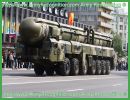






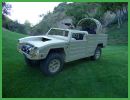
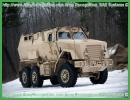
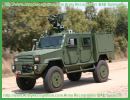
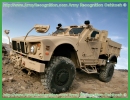
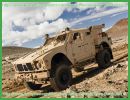








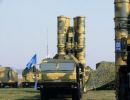
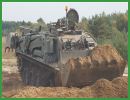





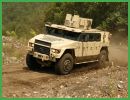







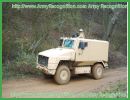


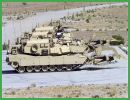
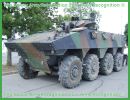







![A contract on the delivery of advanced S-300 air defense systems to Iran has been stagnated by technical reasons, the Iranian ambassador to Russia said on Thursday. Russia signed a contract with Iran on the supply of at least five S-300 air defense systems to Tehran in December 2005. However, there have been no official reports on the start of the contract's implementation. "Iran is ready to receive these systems and our Russian colleagues have assured us that they will meet their obligations," Seyyed Mahmoud-Reza Sajjadi said at a news conference at RIA Novosti in Moscow. "Several technical issues [in the contract's implementation] have emerged, and we hope they will be resolved soon," the diplomat said without specifying the problems. Many experts believe Moscow has refused so far to honor the S-300 contract due to pressure from WaToufan-5shington and Tel Aviv. Both the United States and Israel have not ruled out military action if diplomacy fails to resolve the dispute over Iran's nuclear program and have expressed concern over S-300 deliveries, which would significantly strengthen Iran's air defenses. Russian defense industry officials have repeatedly said that Russia is interested in fulfilling the contract, which is worth hundreds of millions of dollars, but the future of the contract would largely depend on the current situation in international affairs and the position of the Russian leadership.](/images/stories/east_europe/russia/missile_vehicle/5p85se_s-300_pmu2/5P85SE_S-300PMU2_autonomous_launcher_unit_surface-to-air_missile_defense_system_Russia_russian_130.jpg)























